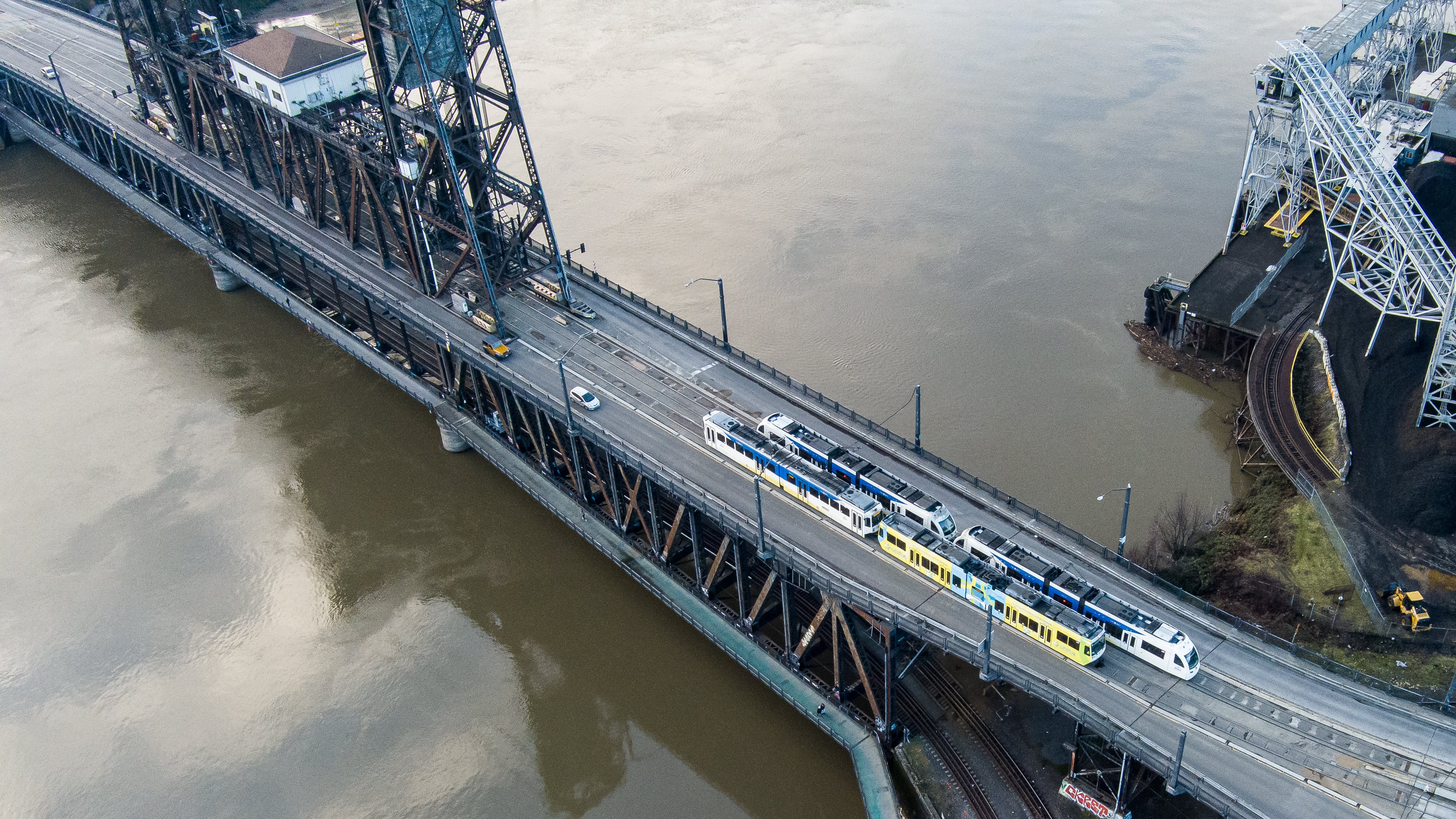Problem: Interstate 5 is a parking lot and TriMet is struggling.
Idea: Use congestion pricing to reduce traffic and pay for better public transit.
The Oregon Department of Transportation wants to build two megaprojects that the agency says would alleviate a major headache: traffic congestion. The price tags are dizzying: $1.45 billion to expand I-5 at the Rose Quarter, triple what was proposed in 2017; and the Interstate Bridge Replacement Project, which engineers said in December would cost $5 billion to $7.5 billion, up 56% from previous estimates.
There are a couple of problems with those escalating prices. First: Critics say there’s no evidence either project would actually reduce congestion. Second: ODOT, which depends on gas taxes for much of its funding, is broke.
Meanwhile, TriMet ridership remains depressed and the agency needs more revenue to enhance service and win back customers.
The good news? There’s a viable fix for congestion that doesn’t require any new money—and could provide a cash infusion for TriMet.
“There is a consensus among economists that congestion pricing represents the single most viable and sustainable approach to reducing traffic congestion.” The source for that assertion? Not the well-organized band of local critics led by the group No More Freeways, but the Federal Highway Administration.
Examples of user charges significantly reducing traffic abound, from the Tacoma Narrows Bridge and the State Route 99 tunnel in Washington to the Interstate 65 bridge in Louisville, Ky.
Congestion pricing advocates say ODOT should manage traffic by charging drivers more during rush hour and little or nothing late at night or early in the morning. Examples of congestion pricing can easily be found in other industries: Electricity is dirt cheap in the middle of the night, expensive during the day; holiday airline tickets cost way more than offseason travel; bars lure customers with happy-hour prices.
Want to lighten rush-hour traffic to the ‘Couv? Charge road users. Experience in other cities shows many of them will make other plans.
When Oregon lawmakers passed a massive $5.3 billion funding package in 2017 that included some funding for the Rose Quarter expansion, they ordered ODOT to figure out how to charge drivers to help pay for that and other projects. The agency has indicated it is more focused on using tolling revenue to build new highway capacity (including the Interstate Bridge replacement) than in investing in transit and other modes of transportation.
Rather than funding the I-5 megaprojects that studies show would not relieve congestion or reduce vehicle emissions (the largest source of greenhouse gases in Oregon), critics, led by Portland economist Joe Cortright, say the tolling revenue should be used to buy more buses, create bike infrastructure, and make streets safer for pedestrians.
Building more freeway lanes just generates more traffic. That won’t reduce congestion or make highways safer. Some leaders want ODOT to think more creatively.
“Tolling working Oregonian commuters without a plan to provide affordable alternatives to driving is regressive,” says state Rep. Khanh Pham (D-Southeast Portland). “Oregonians would greatly benefit from investments in safer streets for walking and biking, and public transit funded via an equitable congestion pricing policy.”
It’s a big decision: ODOT’s public comment period on how and when to start charging for the use of I-5 and I-205 in the Portland region closes Jan. 6. It is a stark choice: The state is picking between what Pham calls “more and bigger freeways that will drive more pollution” and a commitment to public transit that once made Portland a national leader.

